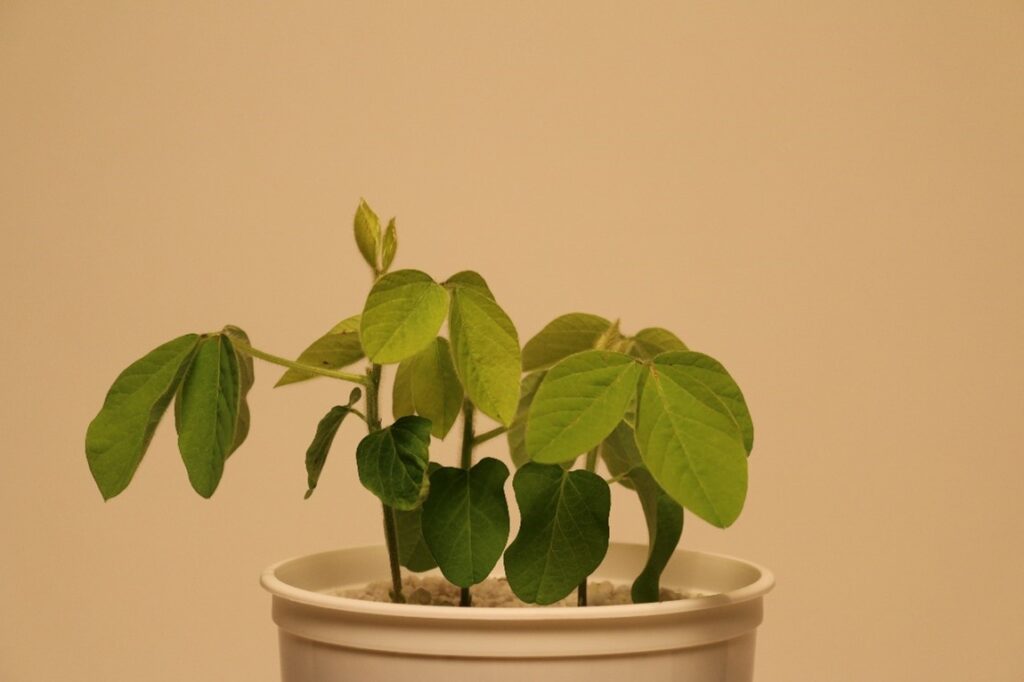Sulphur (S) is an essential nutrient necessary for plant growth. It plays an important role in nitrogen fixation, photosynthesis, and protein formation. Over the past decades, air-borne S emissions have drastically reduced in the Great Lake Basin, reducing the amount of S available to crops. Much like nitrogen, S moves downward with soil water through the soil profile and can be rapidly depleted, even if soil levels were adequate in previous years.
A major challenge in determining the need for S fertilizer is that soil tests for S are unreliable. To add to this challenge, S deficiency symptoms are not obvious in soybeans. Sulphur deficient soybeans exhibit reduced growth, delayed maturity, reduced protein formation, and leaves that are pale green. Leaf veins also become pale in colour. These symptoms are similar to N deficiency. See figure 1.
Soybeans accumulate less S from the soil in comparison to other crops such as canola or alfalfa making it less likely to get a response to S fertilizer. For a 50 bu/ac crop of soybeans, only 9 lbs/ac of S is removed. Meanwhile, alfalfa removes approximately 27 lbs/ac. Historically, S fertilizer did not consistently increase soybean yields in Ontario research trials. Recent research continues to show little yield response to S fertilizer on many Ontario soils, except on coarse textured sandy soils. In some fields a yield response has also been observed on fine texted soils. Soybeans grown on sandy soils have shown a large yield gain (up to 10 bu/ac) to the application of spring applied S fertilizers such as granular ammonium sulphate. Research is underway to determine when a response could be expected on soybeans in Ontario. A spring soil application of 10 – 20 lbs/ac of actual S is sufficient for soybeans. Ammonium sulphate works well because it also provides a small amount of nitrogen fertilizer to aid in early season canopy closure.

Figure 1. Soybean plants exhibiting sulphur deficiency symptoms. Photo source: Jake Munroe.